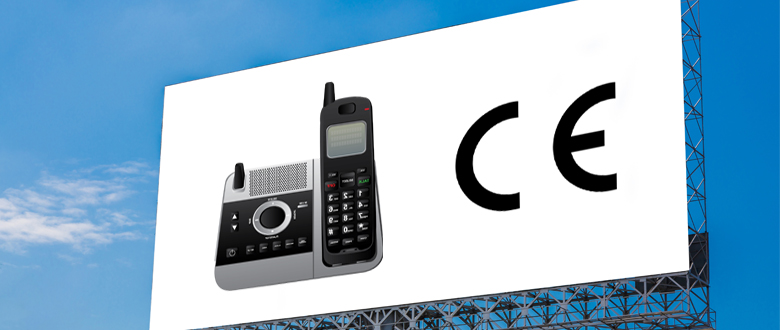ANCOM Warning: Look for the CE Marking on Cordless Fixed Telephone Sets!
05.09.2017

ANCOM continues the information campaign on holding, putting into service and using DECT 6.0 cordless fixed telephones without the CE (European Conformity) marking. Equipment without the CE marking, which typically comes from outside the European Union and does not comply with the European radio frequency allocation standards, causes harmful interference to mobile communications services and using such equipment may be sanctioned according to the legal provisions. Click here for video.
Â
The radio spectrum monitoring and control actions carried out by ANCOM’s technical teams have revealed significant increase in the cases of harmful interference with mobile communications services (telephony and Internet) caused by DECT 6.0 cordless fixed telephones without the CE marking, used by natural persons. In the first half of this year only, the number of DECT 6.0 phones that caused harmful interference to mobile communications services increased by more than 50% compared to the total number of cases reported last year.
DECT 6.0 telephone sets without the CE marking
DECT 6.0 cordless fixed telephones without the CE marking come mostly from the United States, Canada, or from Asian countries and are intended for use in these countries.
In most of the cases identified and solved by ANCOM, telephones without a CE marking were introduced in Romania by individuals having travelled to the US or were sent to the country by third parties, generally relatives of the users. Such telephones were used in private homes, for personal purposes.
Why harmful interference?
DECT 6.0 cordless fixed telephones operate in frequency bands that are intended for other services in Romania, namely for 3G broadband mobile telephony and internet services. When such a non-compliant device is put into service on the territory of Romania, it produces interference that disrupts the operation of mobile telephony services.
What happens when interference occurs?
When a mobile telephony and mobile Internet base station is affected by such interference, cascading effects are triggered: the respective base station coverage area diminishes, the number of users able to use their mobile telephony or internet service in that area significantly decreases, consequently call initiation is hampered, and ongoing calls are interrupted.
In extreme cases, the interference caused by these types of telephones may affect calls to the emergency number 112. Radio spectrum resources are limited, and harmful interference on this resource can directly or indirectly affect any citizen.
Remember!
Users holding DECT cordless fixed telephone sets must check the presence of the CE marking on the device. If there is no such marking, they must immediately disconnect the device (both the portable terminal powered by battery/rechargeable battery and its base station, either powered by battery/rechargeable battery or connected to a power source on the electrical network.
DECT 6.0 telephone sets lacking the CE marking may cause harmful interference to electronic communications services, when connected to the power source.
Further types of radio equipment can affect mobile telephony services, as well, if they lack the CE marking: mobile handsets, baby monitors, desktop PCs, tablets, laptops, remote controls, routers, radio controlled toys, drones, video game consoles and controllers, etc. Certain non-radio equipment can cause harmful interference in the absence of the CE marking: lighting fixtures, automatic switches, home appliances, infrared remote controls, etc.
Â
Applicable sanctions
If holders of such equipment continue to use it, they breach the provisions of Government Decision no. 740/2016 on making available on the market of radio equipment, this offense being sanctioned by fine amounting from 500 to 5,000 lei. Further information on non-compliant electronic equipment and household appliances, the CE marking and the obligations incumbent on manufacturers, distributors and consumers are available on the Authority's website.


 top
top